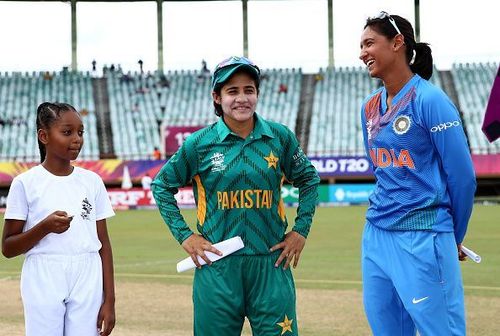
ICC Women's World T20: A different flavour of India-Pakistan rivalry

11th November marked another interesting cricketing contest between the two renowned nations in the cricketing world. India and Pakistan locked horns against each other in the Women’s World T20.
T20 seems to be a format highly suitable for both Pakistan women’s and men’s teams as it brings out the energy where players are seen buzzing around in the field. As expected, it was another comfortable victory for India who have dominated the rivalry historically too. However, Pakistan's performance deserved praise as well.
Their sleek and disciplined bowling effort, energetic fielding and most importantly fearless body language made this match an entertaining one. Even though 133 was not a thumping target with the recent batting improvements in the women’s game, Pakistan still seemed determined to not give the match away.
What differentiated the two teams was essentially batting. Being able to chase runs or put up a good total requires depth in batting, a quality highly ingrained in the Indian batting line up. Of course, the players are to be fully credited for their skills. But what is evident is the maturity of a majority of the Indian players which suggests the way they are groomed in this department.
From shot selection, running between the wickets and most importantly building partnerships, every player seems to have a crystal clear idea of their role when batting. Another interesting point of consideration is the low-risk approach of Indian batting. There seems to be this solid focus and clear decision making during execution of their plan something Pakistan seems to be lacking.
Pakistani batters were a victim of two run-outs, three catch-outs and two stumpings. Improvisation is what differentiates an intelligent batter to an average one. Whether it is in the form of charging the ball with use of good footwork or use of crease to disrupt the bowler's line, T20 cricket can put up pressure on a batter not used to playing that way.
It's not always sixes and fours that put the opposition under pressure. A change of strike can build the momentum which can be psychologically alarming for bowlers. An approach that requires patience and control, something Pakistan seems to lack.
For Pakistan, the senior duo of Bismah Maroof and Nida Dar dominated the batting scene by achieving a crisp fifty each. For India, the experienced Mithali Raj opening the batting was a smart move that paid off highly. She put the opposition on the back-foot psychologically as she became a worry with every over passing.
The others helped Mithali build a partnership which set up the platform for an easy Indian chase. They also have the likes of Smriti Mandhana, another highly reputable player in the cricketing world. Their strong batting lineup seems to be doing the trick for India.
However, Pakistan's bowlers tried to maintain consistency in the bowling department where spinners did showcase promising line and length. Sana Mir, the most experienced player for Pakistan, and Nida Dar exhibited good skills. Even though the likes of Bismah Maroof, Anam Amin, Diana Baig, Aliya Riaz tried valiantly, India appeared to have cracked the code as nothing seemed dangerous for their batters.
Statistically speaking, the Pakistan women's team might not be a strong side. However, one major positive aspect is the influence of the new coach which is reflected on the body language and efforts of the players. This was quite opposite to what happened in the ODI World Cup last year.
Overall, what is exciting is to see both India and Pakistan putting up a good match and making women’s cricket an entertaining sport worthy of media broadcast and increasing spectators.